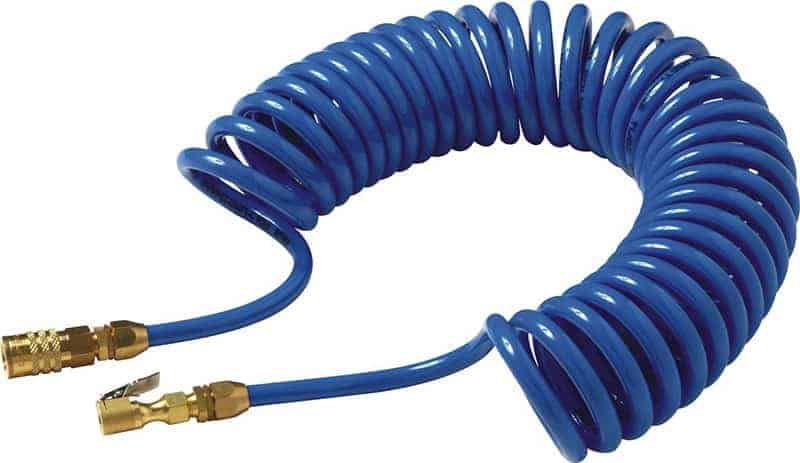Do not to use the coiled type air hose on high air consumption air tools like air impact wrenches
Poor performing compressed air tools are quite common at industrial sites. The tools may lack torque, and even stall if any significant load placed on them. This lack of output could be reducing your production output and therefore be costing you money.
Most of the times, the source of the problem is incorrect designed air supply system: the filters, regulators, lubricators, connectors, hoses, and fittings used in transporting the compressed air to your tool are not the correct size. If these are not selected correctly, then the tool may get air pressure that is lower than its requirement, and result in lousy air tool performance.
An easy way to check and see if you have a problem is to set up a little test using an accurate pressure gauge, a suitable airline connection, and quick connect couplers. Place the test air gauge in series with the tool and check the pressure. Maybe system pressure is 100 psi, and that is what you would see on the gauge with the tool at rest. Should the feed to the tool be regulated, then you would see the regulator set to air pressure. If no air is flowing to the tool, then there should be no pressure drop in any of the air supply gauge that exclusively feeds the tool.
Now, try to operate the tool, and once there is a flow of air, any air pipeline restrictions develop a pressure difference and reduce the pressure at the tool. By looking at the pressure and compare it with the initial pressure before operating the tool. Now if the pressure drops excessively to levels below the rating of the tool, then you have an air supply system problem.
If you are wondering which specific component is causing the problem, then move the gauge upstream and go through the same test process again. By carefully recording the pressure drop caused by the tool operation you can usually isolate the problem to one or more components.
What’s causing the air pressure restriction? Often industrial plants choose to install just one standard size of components for every tool and piece of equipment in the plant. However, the compressed air flow of different machines and tools can vary widely. A ¼-in hose may be the right size for a small pneumatic screwdriver, but if applied to a higher air consumption tool like an impact wrench, then poor tool performance results.
Carefully investigating each air tool’s flow demand requirement gives you the information to correctly size air supply components for the low-pressure drop required to keep the tool at or above its rated pressure during operation.
Often the airline or air supply components may only need to upgrade one size up. For example, a 3/8-in component instead of ¼-in. (Checking the component pressure differential curves supplied by the manufacturer can be helpful when doing this.)
People are often surprised to learn how low the pressure drops at their tool. Testing makes you aware and understand the problems and can show if your airline or components upgrades have fixed the problem. Proper sizing of supply components is the key.
What if the air pressure is correct and doesn’t seem to be the problem? One other thing to consider is tool maintenance. Many people do not realize that many compressed air tools need to lubricated at a regular period to prevents internal wear and helps seal internal moving parts from blow-by leakage. Please read the tool manual for lubrication guideline.

